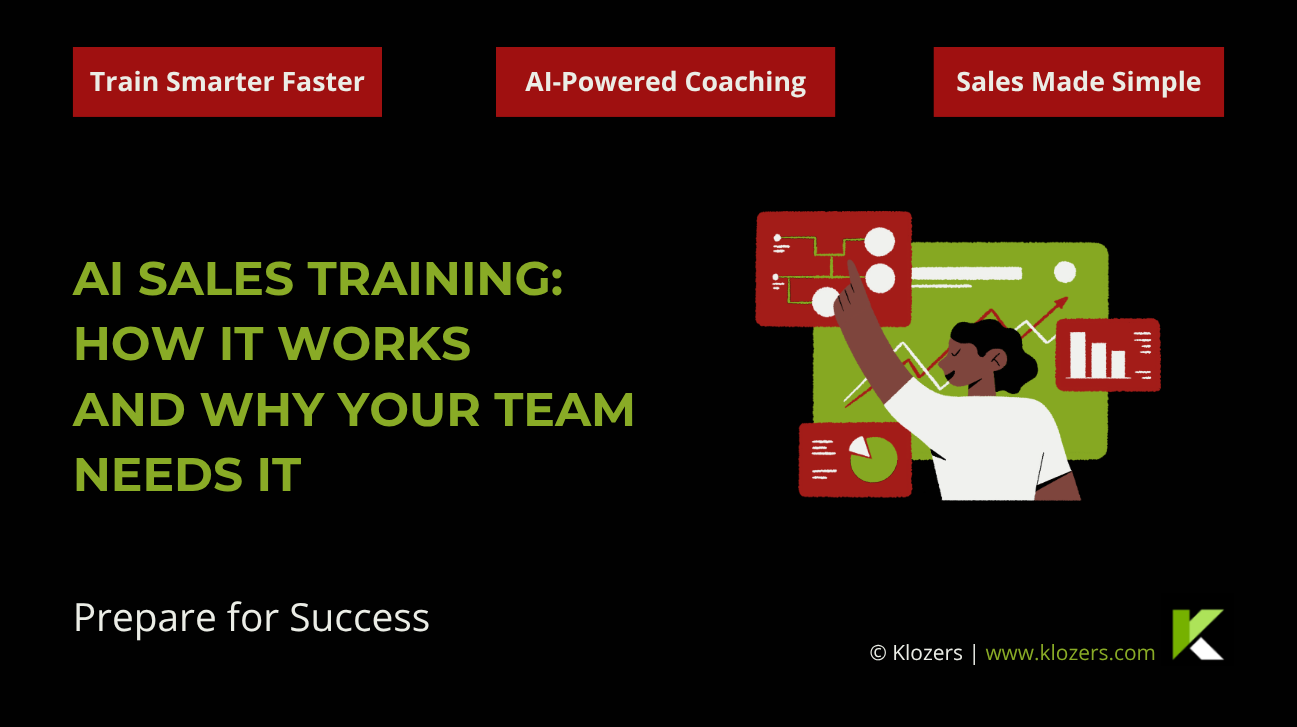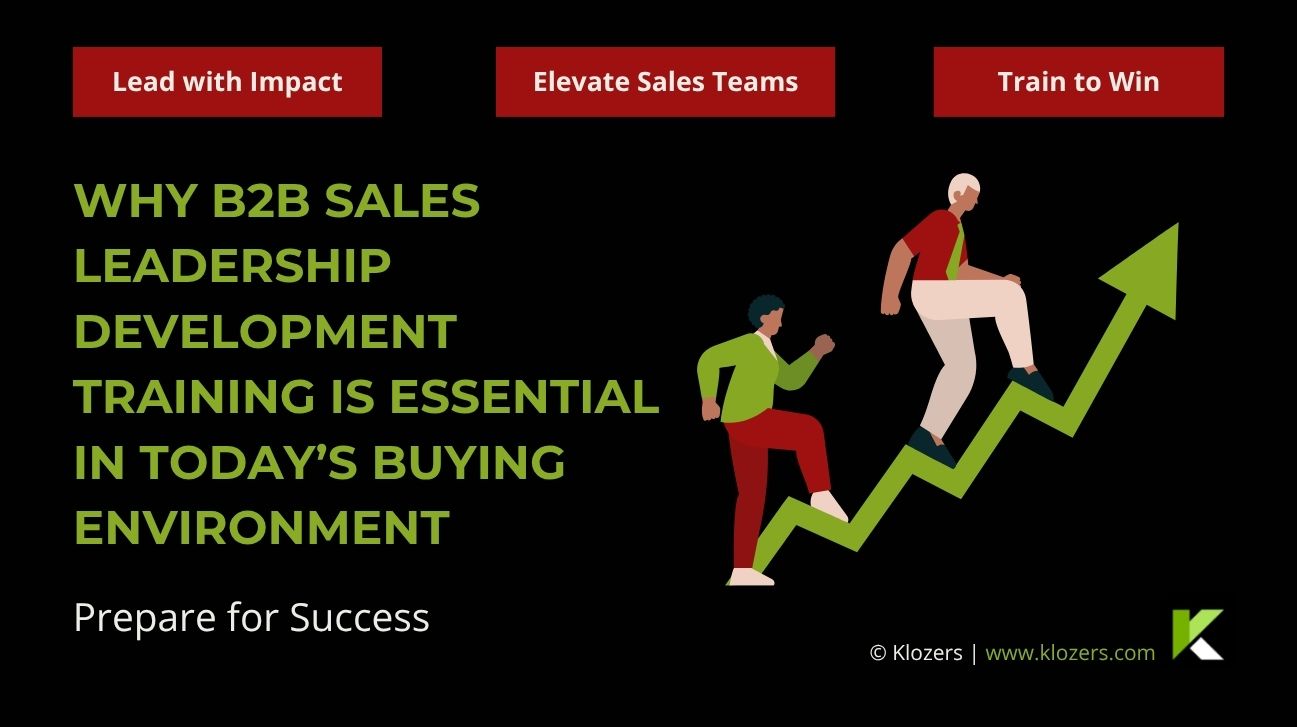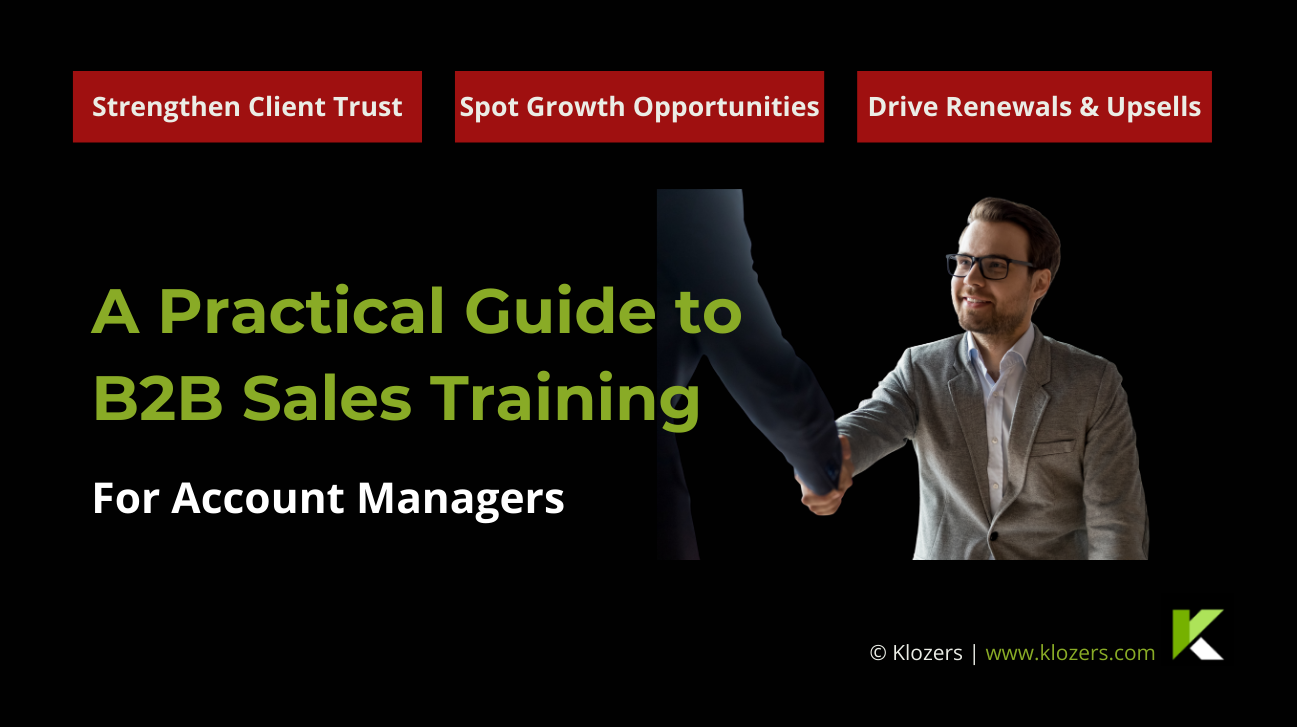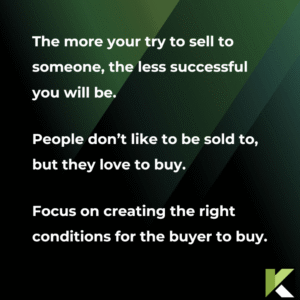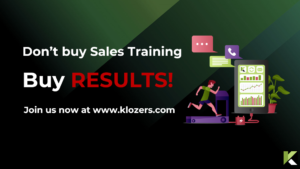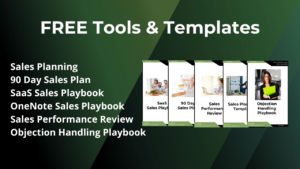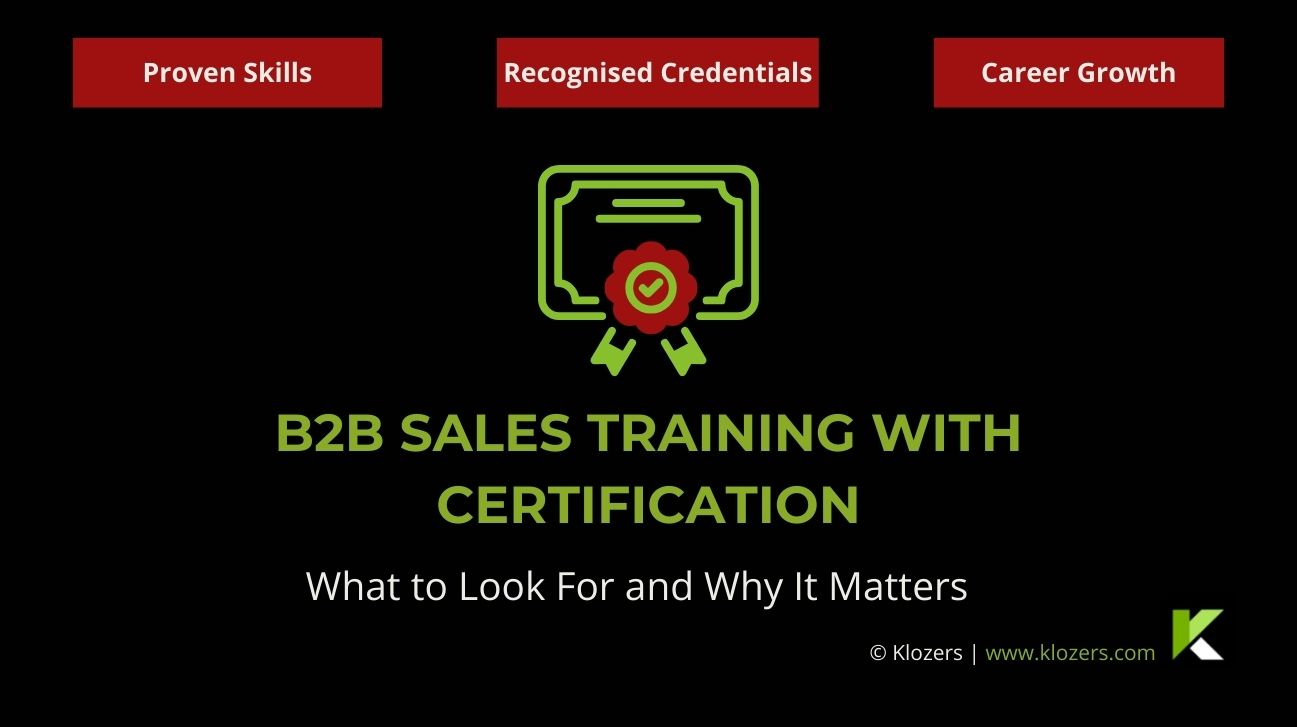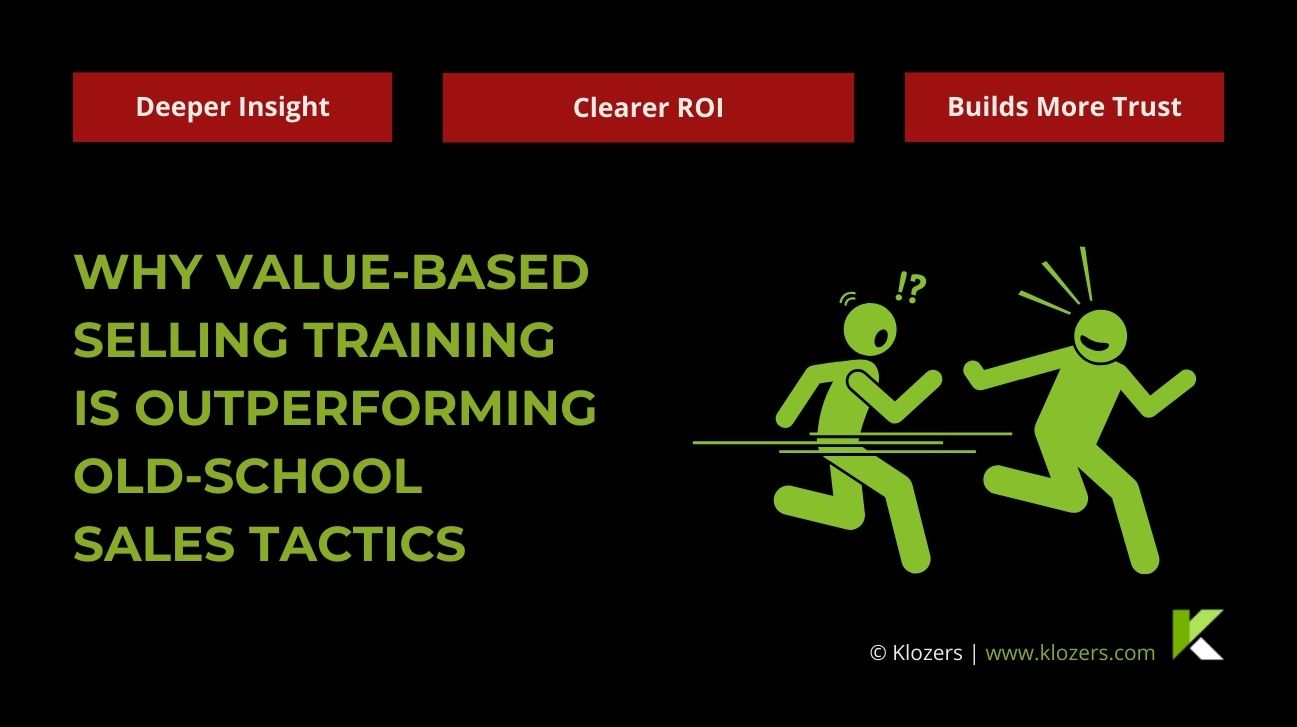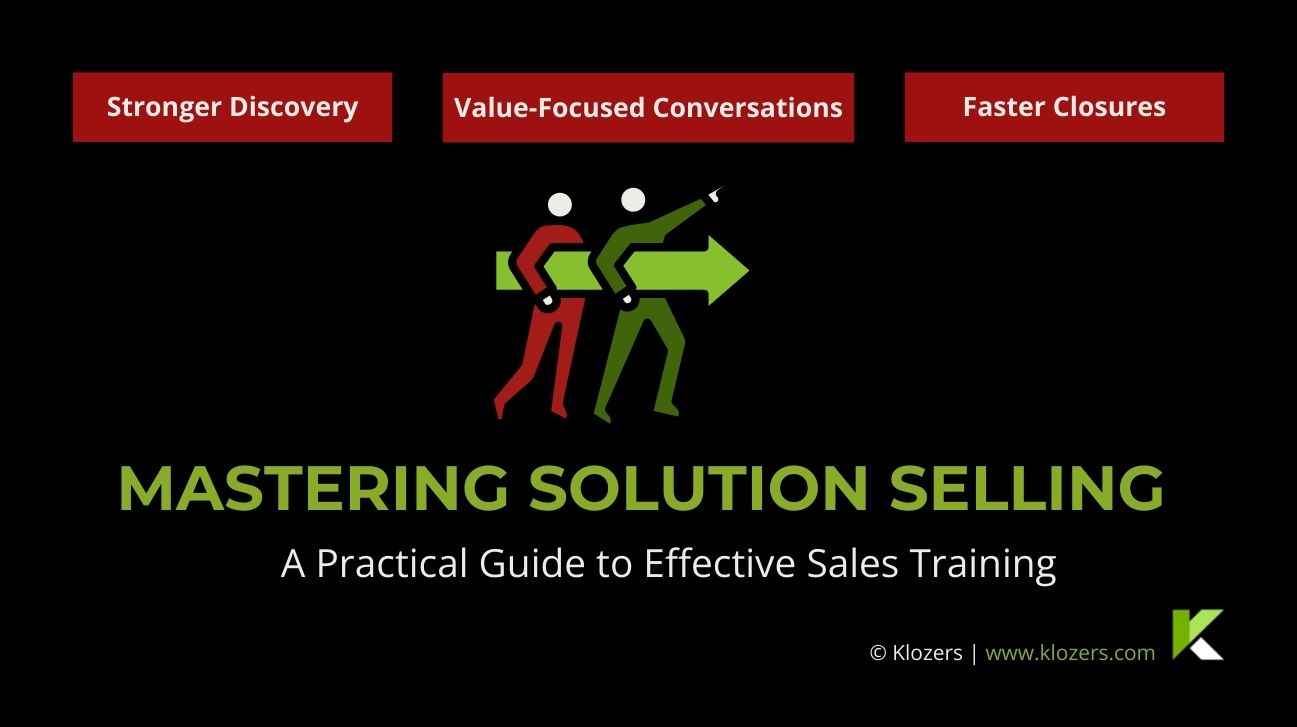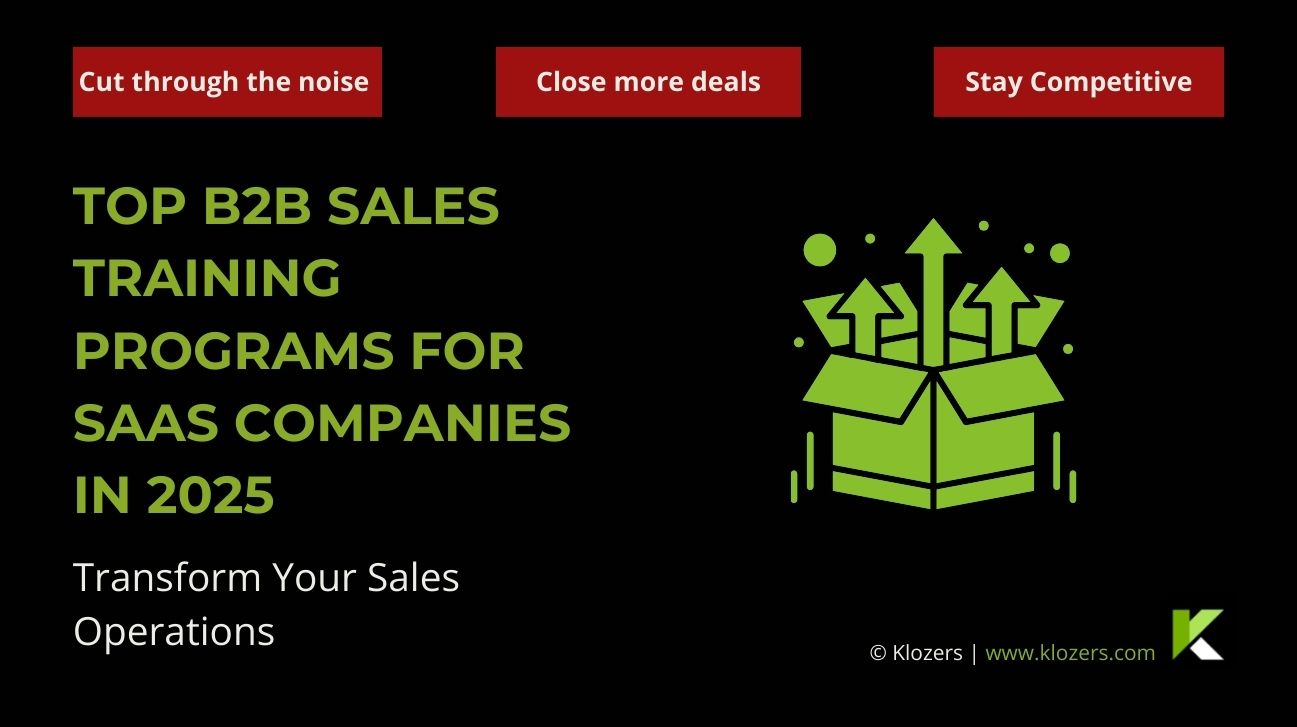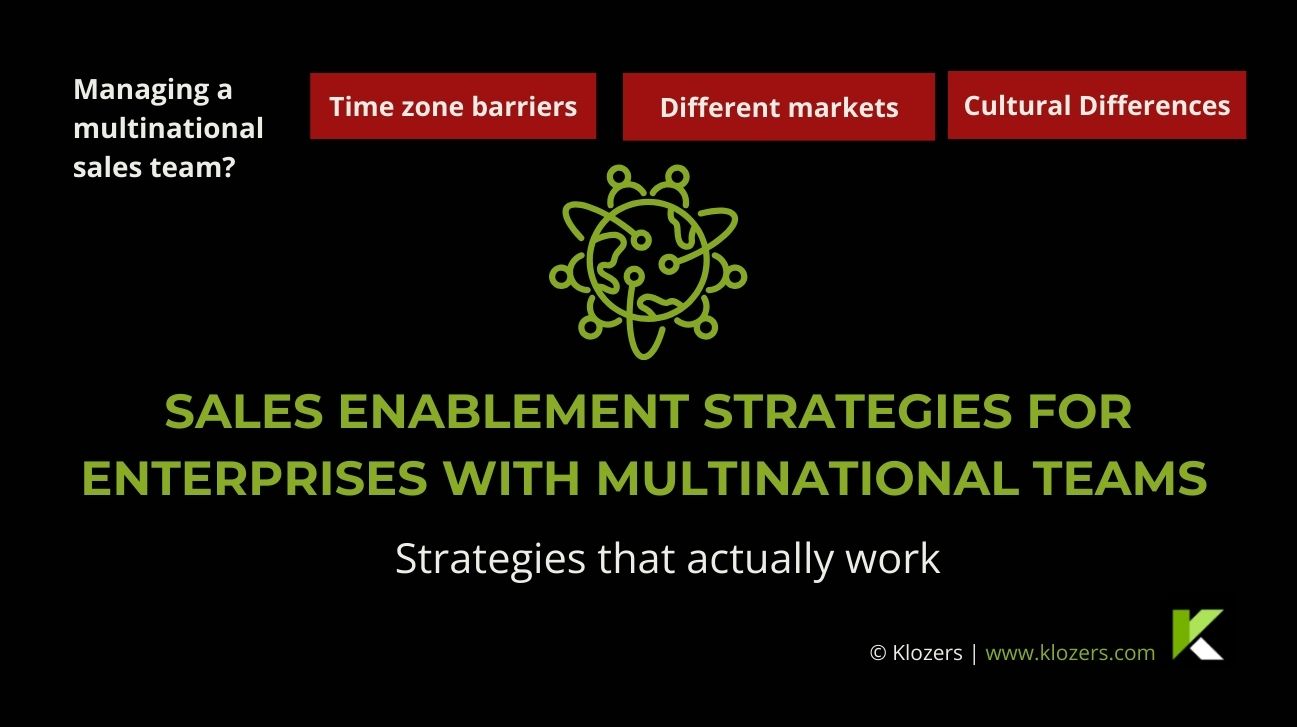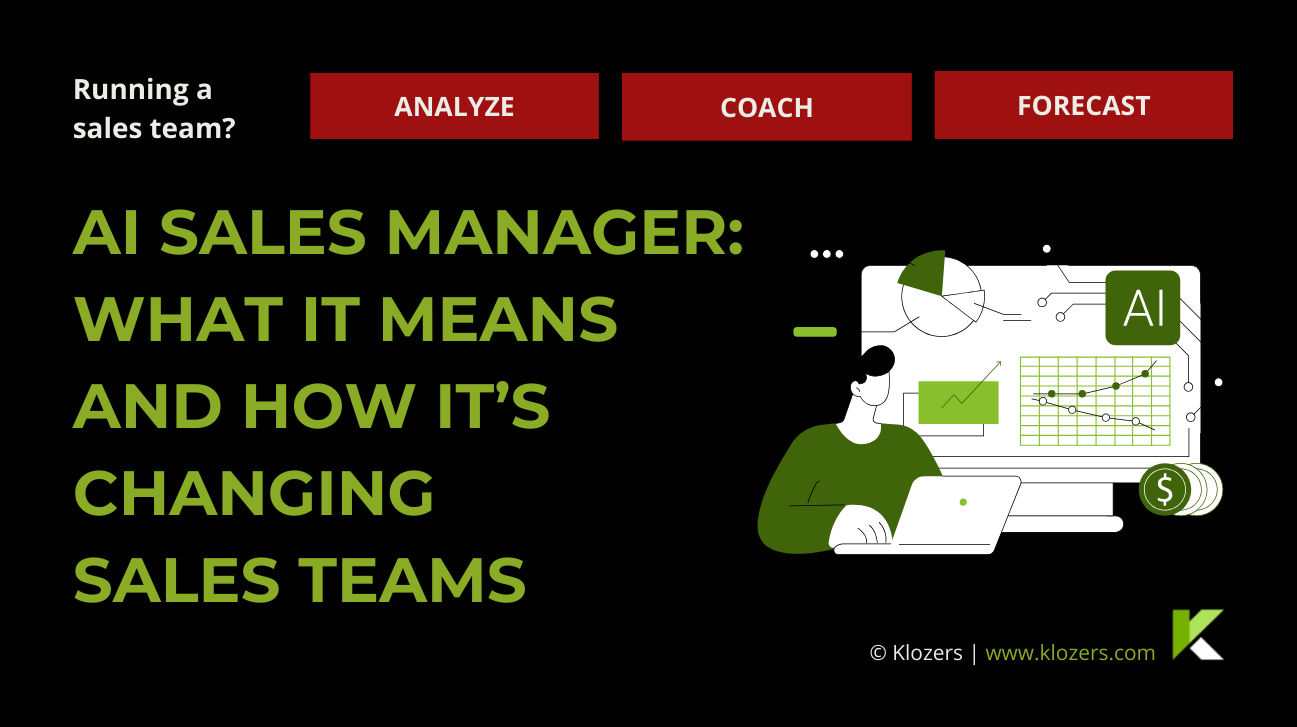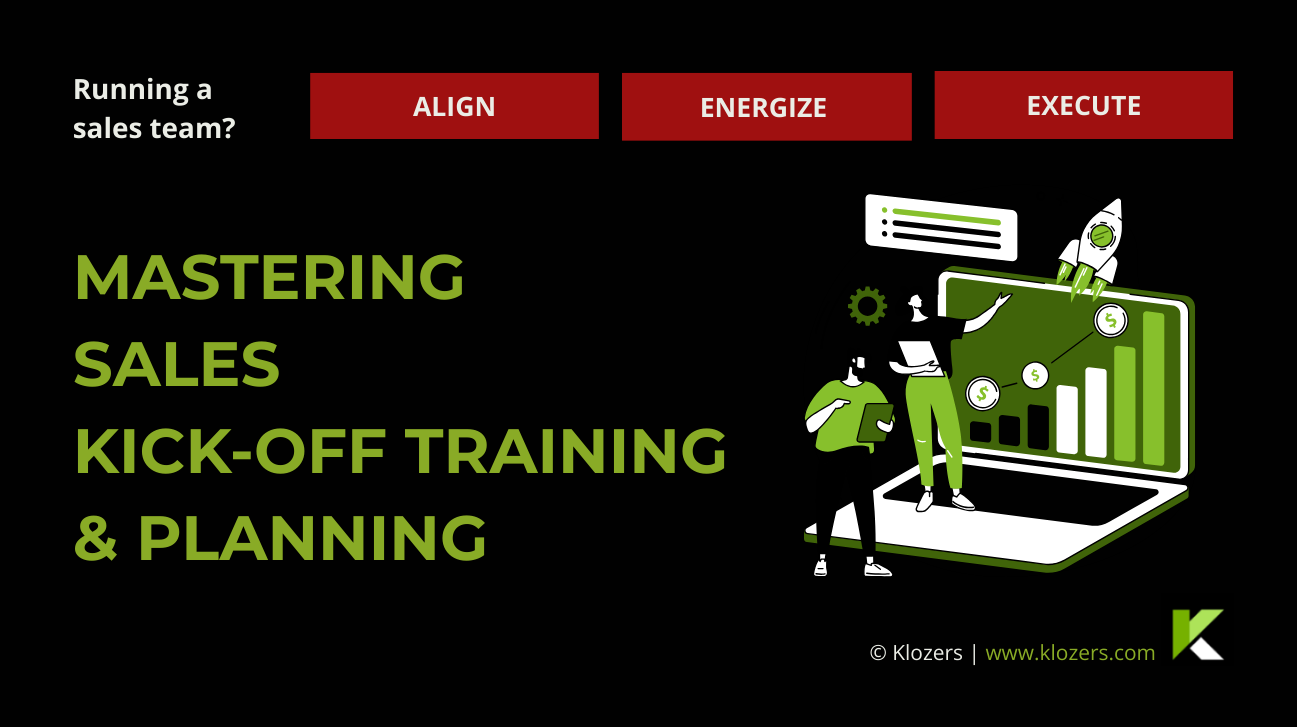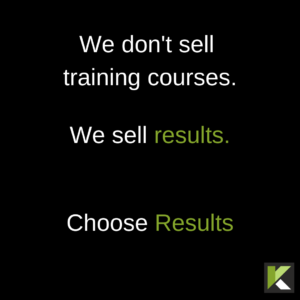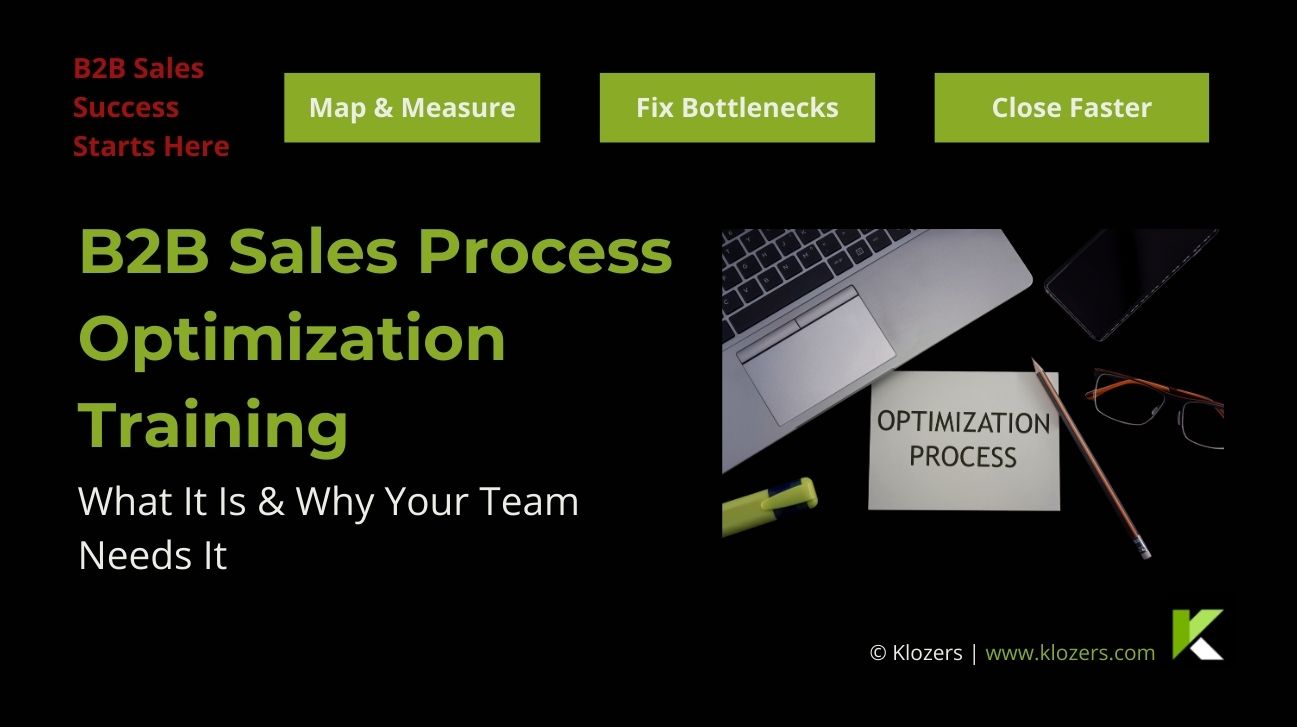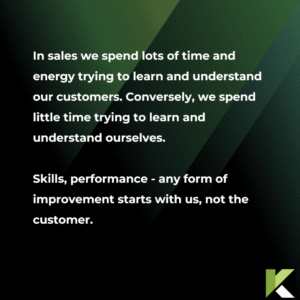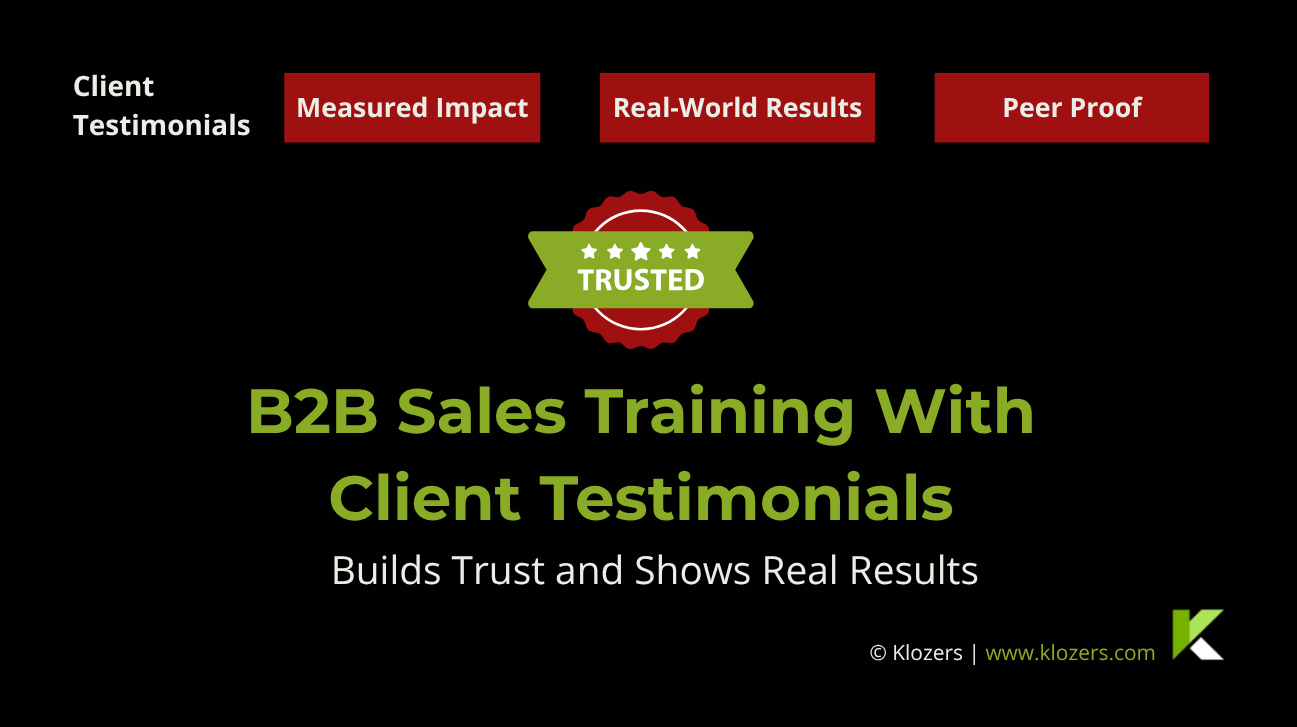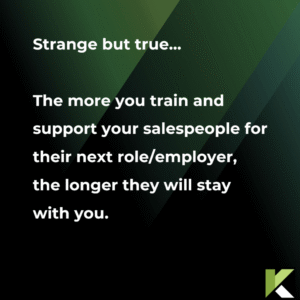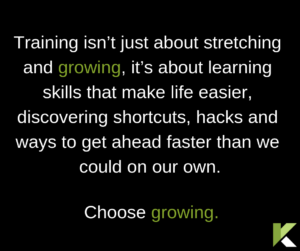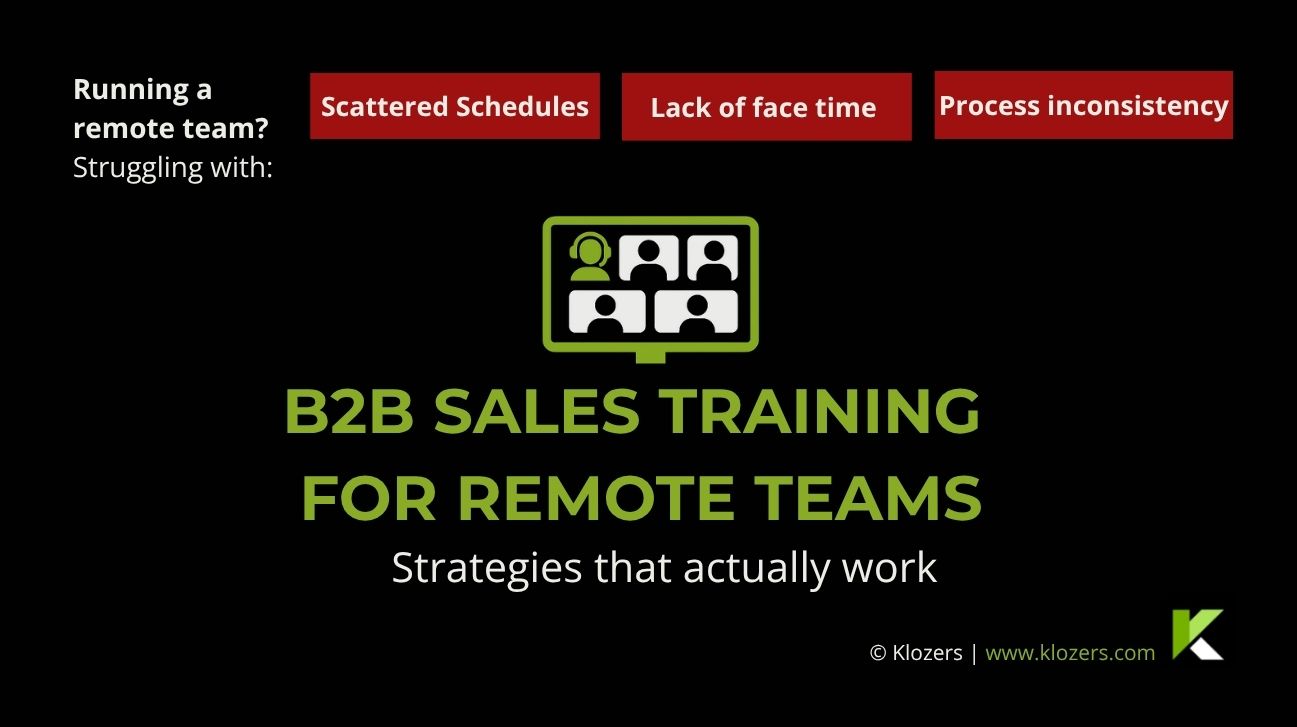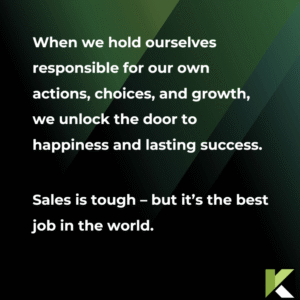Top Question From Google:
Which B2B sales training programs will set SaaS teams up for success in 2025?
SaaS selling demands more than generic training. Subscription models, product‑led growth, and data‑driven decision‑making require specialised coaching. Top programs like Klozers, pclub.io, Winning by Design, SalesHood, The Brooks Group, Funnel Clarity, and Richardson Sales Performance provide consultative selling frameworks, AI‑driven techniques, and real‑world practice. By investing in these training providers, SaaS teams gain the skills to shorten sales cycles, grow recurring revenue, and build lasting customer relationships.
Introduction: Top B2B Sales Training Programs for SaaS Companies in 2025
In the current hyper-competitive SaaS environment, great products alone don’t drive revenue. Great sales teams do. But even the most talented reps struggle without the right training, especially in a space where buying behaviour evolves faster than tech stacks.
If you’re a SaaS sales leader, revenue enablement manager, or founder scaling a sales org, investing in a modern, B2B-focused training is a must.
With AI reshaping deal cycles, product-led growth transforming funnel dynamics, and buyers demanding deeper expertise, traditional training methods simply won’t suffice.
But what are the best B2B sales training programs that SaaS teams can use to drive sustainable growth in today’s market? This guide will answer this question.
Specifically, it’ll discuss what B2B SaaS sales training means, the key features of top-tier programs, the best B2B SaaS sales training providers in 2025, and how to choose the right one for your team.
What is a B2B sales training program?
A B2B sales training program is a structured learning experience designed to equip business-to-business (B2B) sales teams with the skills, strategies, and tools they need to close deals more effectively.
Unlike general sales training, B2B programs are designed to address the unique challenges of selling to other businesses, which often involve longer sales cycles, multiple decision-makers, complex pricing structures, and higher-value contracts.
These programs teach sales reps about:
- Prospecting and lead generation: Identifying and qualifying high-potential business leads.
- Consultative selling techniques: Asking the right questions to uncover pain points and align solutions.
- Sales process management: Navigating each stage of the sales funnel with precision.
- Sales negotiation and closing: Handling objections and driving deals to a successful close.
- Relationship building: Cultivating trust and credibility with key stakeholders.
B2B sales training can take many forms, including in-person workshops, virtual sessions, self-paced sales courses, or blended learning models.
The goal is to empower sales professionals with the confidence, skills, and sales tools they need to refine their sales strategies, achieve sales success, and drive meaningful business outcomes.
How B2B SaaS sales training differs from traditional B2B sales training
While both traditional B2B and B2B SaaS sales involve selling to businesses, the nature of SaaS products and the dynamics of the software industry require a different sales approach, and therefore, a different type of training.
Here are the key ways B2B SaaS sales training stands apart:
Emphasis on subscription and retention
Traditional B2B sales often focus on large, one-time purchases. In contrast, SaaS companies operate on a subscription model, where long-term customer retention is just as important as the initial sale.
SaaS sales training places a strong focus on customer lifetime value (CLTV), onboarding effectiveness, and minimising churn.
Faster product iteration and continuous learning
SaaS products evolve rapidly through regular updates, new features, and integrations. As a result, SaaS sales reps must continuously stay up to date.
Training programs are often ongoing, with built-in mechanisms for learning new product capabilities, use cases, and technical requirements.
Product-led growth (PLG) integration
Many SaaS companies leverage PLG strategies, where the product itself plays a central role in the sales funnel (e.g., through free trials or freemium models).
SaaS sales training includes how to interpret usage data, identify high-intent users, and convert them from free to paid plans. And this is a dynamic not typically present in traditional B2B sales.
Greater need for technical and consultative selling
SaaS buyers expect salespeople to understand not only business needs but also how a product integrates with existing systems, security protocols, and workflows.
This requires a higher level of technical fluency and a consultative, solution-oriented approach in training.
Shorter sales cycles at the low end, complex cycles at the enterprise level
SaaS sales can range from quick, transactional deals (e.g., selling a low-cost tool to a startup) to highly complex enterprise agreements involving legal, security, and procurement teams.
Training must address both ends of this spectrum, which is less common in traditional B2B sales environments.
Features of the best SaaS sales training programs
The best SaaS sales training programs go beyond generic sales techniques to address the specific challenges and opportunities of selling subscription-based software.
Here are the key features that distinguish top-tier programs:
SaaS-specific curriculum
Effective B2B sales training for SaaS is built around the nuances of SaaS sales (such as subscription models, recurring revenue, customer success alignment, and churn prevention). They focus on selling value, not just features, and often include real-world SaaS sales scenarios that demonstrate their effectiveness.
Role-based learning paths
Top-rated sales training for B2B saas is tailored to the unique responsibilities of each sales role. Whether it’s sales development representatives mastering outbound prospecting, account executives refining their discovery and closing skills, or customer success teams learning upsell techniques, top programs offer specialised content for each.
Emphasis on metrics and data literacy
SaaS sales rely heavily on data, from product usage signals to pipeline health and conversion rates. Leading programs train sales representatives to understand and interpret data, and act on key metrics (such as CAC, LTV, ARR) and usage trends to drive smarter selling.
Product-led growth integration
In modern SaaS, product usage often drives the sales conversation. For this reason, top sales programs for SaaS companies teach reps how to use product analytics to identify buying signals, prioritise outreach, and craft contextual pitches that align with the user journey.
Ongoing training, coaching, and reinforcement
Training isn’t a one-time event. Top programs include regular sales coaching, deal reviews, and practice scenarios to reinforce sales skills over time. This ensures learning reps always have what it takes, especially in a high-change environment like SaaS.
Real-world application
Theory is important, but practical application is critical. Therefore, the best SaaS sales training includes live role-plays, call reviews, sales simulations, and assignments tied to real pipeline opportunities, helping reps immediately apply what they learn.
Expert-led instruction
Whether from experienced SaaS sales leaders, former AEs, or certified trainers, quality programs are led by people who’ve done the job. Their credibility and insights enhance the content and make it more relevant.
Flexible, scalable format
The best programs support remote teams, global sales organisations, and fast-scaling startups with flexible delivery options, including live sessions, self-paced sales training courses, and mobile-friendly content. Scalability matters as teams grow or change.
Also read: Objection Handling | Overcoming Common Objections.
7 Best B2B sales training programs for SaaS companies
Here are the leading sales training platforms for SaaS, along with specific programs.
1.Klozers
Klozers is a specialised B2B sales training and coaching firm known for helping SaaS companies and professional service teams scale through structured skill development.
What sets Klozers apart is the ability to tailor every program to the client’s specific sales challenges and team maturity (whether it’s early-stage reps, senior account executives, or sales enablement leaders).
Klozers goes beyond surface-level training with executive coaching, performance management consulting, and strategic account development services that align with revenue goals.
For SaaS firms, this means support across the full customer lifecycle (discovery, demos, renewals, and expansion).
Klozers also leans into AI training for sales teams, helping reps future-proof their workflows with modern tools and other enablement software.
Key features
- Customised B2B sales training and coaching, tailored to team goals and industry nuances
- Focus on SaaS sales, consultative selling, key account management, and AI in sales
- Delivery formats include in-person workshops, live virtual training, hybrid learning, and on-demand courses
- Strong emphasis on executive-level coaching and embedding accountability into sales processes
- Best for growth-stage SaaS companies seeking hands-on coaching and long-term performance development
Notable courses Klozers offers include:
- SaaS Sales Training. It teaches how to position SaaS value propositions, run effective demos, and shorten sales cycles. Includes objection handling and pricing conversations specific to recurring-revenue models.
- Consultative Selling Skills: Helps salespeople shift from pitching to problem-solving, with frameworks for questioning, listening, building trust, and driving urgency based on buyer needs.
- Key Account Management: Designed to retain and grow high-value customers through structured customer engagement strategies, stakeholder mapping, and value expansion planning.
- AI Skills for Salespeople: A modern, practical course on using AI tools to boost productivity, personalisation, and deal strategy in a B2B context.
- Executive Sales Coaching: 1:1 and team-based coaching for sales leadership focused on team performance, forecasting accuracy, sales culture, and strategic pipeline development.
2. pclub.io – Platinum Passport
pclub.io is designed specifically for SaaS revenue teams that need tactical, results-oriented training to enhance sales performance.
It offers over 50 structured courses and 100+ AI-powered role‑plays that simulate real sales calls, from cold outreach to closing.
Training paths are tailored by role (SDR, AE, CSM, sales managers, RevOps leader). And instructors are elite practitioners (seasoned SaaS sellers who have scaled real teams).
With pclub.io, you can expect ongoing coaching, peer collaboration, and embedded enablement tools that drive measurable increases in win rate, deal size, and revenue impact.
Key features
- SaaS-specific, role-based program with AI role‑play
- Live coaching and exclusive community support
- ROI-focused (many users report 30–40% improvements in close rates)
- Pricey, making it better for teams with a budget or revenue mandate
Notable courses pclub.io offers include:
- Multi‑Threading Masterclass: How to engage and orchestrate buying committees, increasing win rates by closing more strategic relationships.
- Precision Prospecting: A structured 4‑module course on messaging and outreach strategies proven to accelerate sales pipeline generation.
- Closing Motion Masterclass: A three-phase closing framework focused on urgency, economic justification, and champion-building.
- Win At Your Price: Techniques for anchoring price, resisting discounting, and negotiating high-margin SaaS contracts.
- Climb to Power: Plays and language to gain access and influence with executive-level decision-makers.
3. Winning by Design
Winning by Design is grounded in rigorous, science-based methodologies specifically tailored for recurring-revenue teams. Their approach encompasses GTM alignment across Sales, RevOps, and CS, with frameworks like SPICED for discovery and “trade, not negotiate” for pricing conversations.
Training is delivered via live interactive sessions, certification tracks, and playbook deployment across regional/global teams.
Their blended learning model follows adult learning principles, such as the flipped classroom and scaffolding reinforcement, ensuring teams don’t revert to old habits after training.
Key features
- Enterprise-grade, playbook-driven methodology with global scale
- Role-based certifications and cross-functional revenue alignment
- Live instructor-led training plus game-based and coach-led follow-ups
- Highly structured and process-heavy
- Best for scaling teams adopting a unified sales methodology
Notable courses Winning by Design offers include:
- Discovery Using SPICED: A live, 2‑hour course teaching the SPICED framework to uncover and articulate customer impact in discovery calls. Includes certification and experiential role-play.
- Prospecting for Impact / Into Enterprise Accounts: Programs geared toward enterprise outreach with strategic precision.
- Selling for Impact / Enterprise Selling: Mid‑funnel frameworks driven by using value-based, conversion‑boosting selling motions.
- Account Management for Growth, CS for Impact: Extensions into retention and expansion motions.
4. SalesHood
SalesHood combines a rich on-demand learning library with AI coaching, gamification, and sales enablement workflows. Their 24-module SaaS-focused curriculum emphasises skill development, including prospecting, email, role-play, mutual close plans, and performance tracking across AE, SDR, and CSM roles.
AI-driven features include call summaries, objection suggestions, and personalised next-step coaching. Users also appreciate competitive team dashboards, badging, and collaborative learning formats.
Key features
- On-demand modules plus AI coaching and role‑play
- Gamified learning fosters engagement and retention
- Scalable for mid-to-large-sized SaaS teams; flexible plans by rep level
Notable modules include:
- First Call Qualification: Best practices to set strong discovery calls that uncover clear intent.
- Discovery & Impactful Questions: Techniques to guide conversations using high-impact, consultative questioning.
- Mutual Close Plans: Co‑creating a defined plan that aligns buyer priorities with seller actions.
- Negotiations, Account Planning, Executive Presentations, Getting to Power: Sequential modules covering key stages of complex SaaS deals.
5. The Brooks Group SaaS Sales Training
Focused deeply on consultative selling for SaaS contexts, The Brooks Group delivers a structured curriculum around stakeholder management, value-based selling, and trust-building. The training is delivered via live sessions and role-plays, often customised by vertical or customer profile.
It’s ideal for teams that want to position their representatives as strategic advisors rather than script-followers, particularly in manipulation-heavy pricing and negotiation scenarios.
It also includes coaching follow-through and interpersonal scenario simulations for reinforcing those skills over time.
Key features
- Deep consultative selling and negotiation training
- Focus on trust-based, advisor-style selling
- Role-play heavy, personalised assessment and follow-up
- Best for teams selling mid-market or enterprise contracts with pushback
These are their key courses relevant for SaaS sellers and teams:
- IMPACT Selling: A six-step consultative sales process that equips sales teams with skills to qualify, create value, and close with consistency.
- IMPACT Selling for the Complex Marketplace: Teaches advanced qualification, discovery, and stakeholder management skills
- Sales Negotiation Training (SaaS Edition): It covers framing value, resisting discount pressure, leveraging competitive advantages, and simulating realistic SaaS pricing scenarios.
- Strategic Account Management Training: Focuses on creating account plans, deepening stakeholder relations, and building strategic advisory roles in key client accounts.
6. Funnel Clarity (Trusted Advisor Methodology)
Funnel Clarity’s program is built on analytics-driven insights from thousands of SaaS sales calls and emails. It teaches six focused mini‑courses (which include everything from qualification to demo execution and stakeholder alignment).
Future-forward offerings may include micro-learning modules and even VR-based simulations for real-world practice. This is a clean, metrics-rooted approach suited for reps emphasising consultative selling backed by pattern recognition.
Key features
- Six concise modules focused on trusted advisor skillsets
- Data-driven frameworks based on real SaaS communication patterns
- Lean delivery, micro-learning-friendly, potentially scalable with VR
- Best for teams building consultative cultures and messaging precision
Funnel Clarity’s six courses are:
- Fearless Prospecting: Techniques to break through resistance and dramatically improve qualification rates.
- Quota‑Crushing Sales: Strategies for salesperson-as-consultant, guiding buyers to confident decisions.
- Selling in a New Marketplace: How to position disruptive or emerging solutions effectively.
- Box Out the Competition: Proactive account management to drive renewals and upsell.
- Inside Sales Formula: Remote selling techniques adapted to virtual buyer dynamics.
- Qualify for Quality: Ongoing qualification frameworks to ensure pipeline hygiene and focus.
7. Richardson Sales Performance
Richardson Sales Performance is one of the most established names in the sales training space, and its Connected Selling Curriculum has evolved to meet the specific demands of SaaS companies.
This program blends behavioural science, consultative selling, and modern digital delivery to train reps across the entire customer lifecycle, from prospecting to renewal.
What sets Richardson apart is its focus on behavioural change, not just skill acquisition. Their approach is rooted in decades of sales psychology research and emphasises mindset, emotional intelligence, and adaptability.
This is especially valuable in SaaS, where buyer behaviour is fluid, deal dynamics shift quickly, and reps must stay agile across multiple stakeholders.
Key features
- Behavioural and consultative selling focus, rooted in sales psychology
- Modular, role-based training
- Blended delivery (live virtual sales training, e-learning, mobile-accessible content)
- Manager coaching tools and analytics dashboards for accountability
- Best for SaaS orgs with complex sales cycles, diverse roles, and an emphasis on long-term behavioural change
Notable modules that Richardson Sales Performance offers include:
- Consultative Selling & Challenger Sale: Core programs to align mindset with modern buyer expectations.
- Sprint Prospecting: Rapid‑fire prospecting workshops for pipeline acceleration.
- Winning the Complex Sale: Frameworks for navigating powerful stakeholder structures and enterprise decision cycles.
- Negotiation & The JOLT Effect: Overcoming buyer indecision and negotiating with integrity.
- Account Growth & Coaching Tools: Developing manager-driven reinforcement systems and proficiencies.
How to choose the right B2B SaaS sales training program for your team
Choosing the right sales training program isn’t just about picking the most popular option. It’s about aligning training content, format, and philosophy with your team’s current stage, structure, and growth objectives.
Here are key factors to help you evaluate and select the best B2B SaaS sales training solution:
Match the program to your sales roles
Start by aligning training with your team’s role structure. Remember that each role has different needs. For example, SDRs need support around prospecting and objection handling, AEs benefit from deep discovery and closing skills, while CSMs focus on renewals and expansion.
Thus, choose programs that offer role-specific content, helping each function master its part of the revenue process.
Choose based on team maturity
The needs of a newly formed team differ from those of a mature, quota-carrying salesforce.
Early-stage teams may need foundational training in messaging, qualification, and discovery. More experienced or mid-stage teams benefit from advanced skills such as multi-threading, pricing strategy, and negotiating complex deals.
Opt for programs that deliver relevant training based on your team’s maturity.
Pick a format that fits your workflow
Sales teams today are often remote or hybrid, so delivery format matters. Some providers offer live virtual sessions, while others blend self-paced modules with live coaching or in-person workshops.
Choose a format your team can realistically engage with. Look for programs that also support mobile access, ongoing reinforcement, or manager-led follow-up.
Look for reinforcement and measurable ROI
One-off training rarely drives lasting change. Effective programs incorporate reinforcement through ongoing coaching, role-playing, spaced learning, and performance dashboards.
Ask about post-training support. Are there coaching guides? Is performance tracked? Can you tie learning outcomes to sales metrics like win rate, deal size, or churn reduction? Without reinforcement and measurement, even the best content may fade quickly.
Ensure SaaS-specific relevance
SaaS sales come with unique challenges, such as subscription models, fast sales cycles, stakeholder-heavy deals, and long-term customer value. Training should reflect this.
Make sure the provider covers SaaS-specific topics like:
- Running effective discovery and demos
- Managing renewals and expansions
- Pricing and discounting in recurring revenue models
- Navigating trial-to-close and post-sale handoff
Programs built for traditional B2B sales may not go deep enough into these areas.
Balance the budget with scalability
Training costs can vary significantly. Smaller teams may do well with tactical, budget-friendly platforms. Larger or scaling organisations may need full-service solutions with customizable tracks, certifications, and executive coaching.
Before committing, also consider how easily the program can scale with your team (from a single cohort to a company-wide rollout) and whether it includes tools for internal enablement.
Advantages of B2B sales training programs for SaaS companies
People often ask, “Why is B2B sales training important?” Here are some of the key advantages of B2B sales training programs for SaaS teams:
Improves pipeline quality and lead conversion
Great training gives reps the tools to better qualify leads, ask high-impact questions, and run discovery calls that uncover real buying intent. As a result, sales teams generate stronger pipelines and convert more opportunities, leading to a shorter sales cycle and a higher win rate.
Aligns teams around a proven sales process
SaaS sales often involve multiple roles (SDRs, AEs, CSMs, and RevOps). Without a shared framework or methodology, messaging and execution become inconsistent.
Sales training aligns everyone around a unified language, process, and approach, which improves collaboration and makes forecasting more reliable.
Builds confidence and selling competence
Training equips salespeople with practical tools, scripts, and frameworks they can rely on in real calls (from objection handling to pricing conversations). This builds sales confidence, reduces ramp time, and helps even experienced reps refine their approach to suit today’s SaaS buyer.
Supports expansion and retention goals
Because SaaS is built on recurring revenue, the real value often comes after the initial sale. The best training programs include modules on customer success, renewals, and account growth, helping CSMs and AMs refine their SaaS churn reduction strategies to prevent churn and drive expansion within existing accounts.
Increases deal size and protects margins
Saas sales training helps sellers improve sales effectiveness, as well-trained sales reps learn how to sell on value instead of price. With negotiation strategies, economic justification techniques, and better stakeholder engagement, they’re able to defend pricing, reduce discounting, and close larger deals.
Accelerates ramp time for new hires
For growing SaaS companies, onboarding speed matters. A structured training program helps new reps ramp faster by giving them a clear blueprint for each stage of the sales process, reducing the time it takes to reach quota and become productive contributors.
Future-proofs the team with AI and modern selling skills
Top programs now include modules on AI in sales, digital tools, remote engagement, and data-driven selling. This ensures your sales team is equipped for the future and able to leverage modern sales strategies, platforms, and insights to drive smarter conversations and more efficient sales motions.
Helps leadership development
Many training programs also upskill sales leaders, providing tools for coaching, pipeline inspection, and performance management. This helps build a culture of accountability and continuous improvement, which is critical for scaling high-performing teams
Actionable Tip
Choose one high‑impact skill that feels shaky across your team—maybe it’s discovery calls, multithreading, or pricing conversations. Dedicate the next two weeks to sharpening that skill. Do quick practice sessions, role‑play real scenarios, record yourself, and swap feedback with peers. Focusing on one gap at a time builds confidence fast and sets a strong foundation for broader sales training.
Take Away
Takeaway: Achieve sales excellence in 2025 with Klozers’ B2B sales training programs
B2B sales training transforms how your team engages buyers, builds trust, and drives consistent revenue.
Whether you’re a startup scaling your first outbound team or an enterprise SaaS company aligning global sales functions, there’s a training solution tailored to your goals.
Ready to upskill your SaaS sales team for 2025 and beyond? Start by identifying the gaps and pick a program that can help you close them with confidence. Here’s where Klozers come in!
With deep expertise in B2B sales and a flexible, consultative approach, Klozers helps SaaS companies build high-performing sales teams through tailored training, executive coaching, and leadership development.
Book a free consultation with Klozers and see how our SaaS sales training can drive measurable impact for your business.


